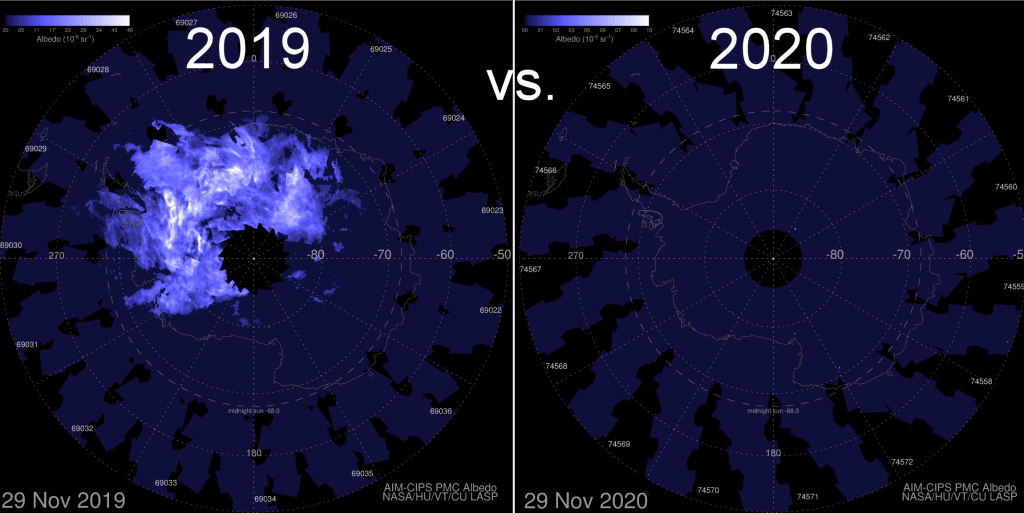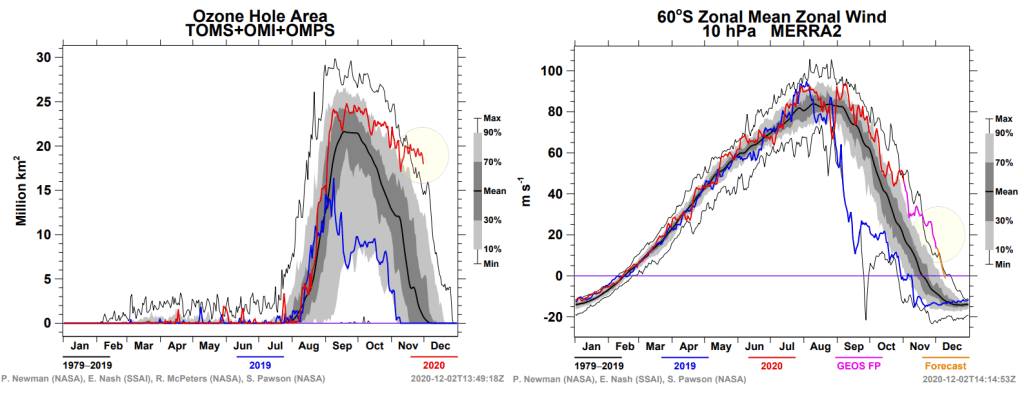Dec. 2, 2020: Consider it the tip of the iceberg. Noctilucent clouds (NLCs) over the south pole are AWOL.
“Normally we see the first NLCs of the southern season around Nov. 21st,” says Cora Randall of the University of Colorado’s Laboratory for Atmospheric and Space Physics (LASP). “But this year, it’s already December and we’re still waiting.”

Missing NLCs is just one of the curious weather patterns currently underway at the southern end of our planet.
Making a list: (1) Earth’s southern ozone hole is not only open, but also the biggest it’s ever been in December. (2) The air above Antarctica is currently at record cold levels for this time of year–the result of an icy polar vortex that refuses to break up. (3) In the stratosphere, east-west winds at 60 degrees South are blowing at record speed. From top to bottom, the Antarctic atmosphere is in a quirky state.
Lynn Harvey, also at LASP, gathered these plots from the Goddard Space Flight Center showing some of the unusual meteorology:

“Based on the trends, I would say noctilucent clouds might not appear until mid-December, which is pretty unusual,” says Harvey.
NLCs are Earth’s highest clouds. They form when summertime wisps of water vapor rise up from the poles to the edge of space. Water crystallizing around specks of meteor dust 83 km above Earth’s surface creates beautiful electric-blue structures, typically visible from November to February in the south, and May to August in the north. Their appearance over Antarctica in 2020 is now seriously overdue.
What’s causing the delay? “I would guess it’s ocean/atmosphere coupling,” speculates Randall. “La Nina strengthened in October, and this is known to affect large-scale circulation in the atmosphere (e.g., Butler et al., 2011; Lin & Qian, 2019).”
“It’s blowing the scale away this year,” says Hampton University professor James Russell, principal investigator for NASA’s AIM spacecraft, which monitors noctilucent clouds. “I can’t wait to see what happens next.”
Stay tuned!
Gracias Tony.
LikeLike
Reblogged this on Tallbloke's Talkshop and commented:
Is La Niña having an effect on Antarctica already?
LikeLike
Pingback: Noctilucent Clouds over Argentina | Spaceweather.com